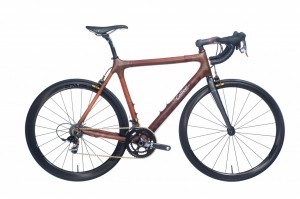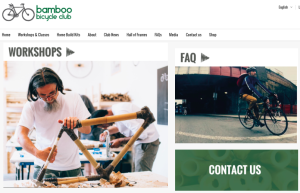I could be so tempted with one of these bamboo bicycle frames. First off, this strikes me as being a realistic and viable material for a bike frame and one that challenges convention.
Straight away I like the idea of challenging convention; that’s just me. Just because something is tried and tested there is no reason why innovation and novel approaches shouldn’t be tried out. The World would be a worse place without quirky inventions. But is “quirky” a fair term for these bikes? Think “bamboo bikes” and it is easy to imagine bamboo poles taped together with Gaffer tape and some conventional bike parts fixed on in a crude way. Nowadays there is nothing further from the truth….
The benefits of bamboo
Very sustainable and environmentally friendly. All bikes have green credentials; these go further with a low carbon footprint
arguably, these are works of art and there will be relatively few on the road
the quality of the ride: reading published material there seems to be a blend between softening, dampening the vibrations arising from the road surface, through to a stiff ride where virtually no power is lost with the frame flexing (or “crabbing”)
And for myself?
Well, I really would like to try one out! Even better would be to go a step further and evaluate bamboo rims at the same time: yes these do exist as well!
Calfee, California
Perhaps there are some around like that and maybe even the prominent manufacturer Calfee started off like that. Craig Calfee is based in California and has had a bike business since the late 1980s. It started with a $10,000 loan to make the tooling equipment needed to make carbon fibre frames with some success. That has led on to being (almost certainly) the first to make a carbon fibre frame tandem. Innovation didn’t stop there because in 2003 he perfects a Coupled Carbon Frame. This where the frame can be dismantled for travelling etc.
As far as using the material of bamboo is concerned, this started in 1995 when a bike was made as a bit of a stunt. The story then rolls forward to 2005, some ten years later, when bamboo framed bikes were into production. A link was formed in 2006 with Ghana (west Africa) following Calfee’s visit there and making the observation about the way bicycles are used there.
Nowadays there is a range of bamboo frames that can be purchased; ranging from the Luna at $2,195 through to the Dragonfly at $4,195.
Closer to home: the Bamboo Bicycle Club
Myself, I rather like the idea of doing something closer to home. This could come in the form of building my own frame at the Bamboo Bicycle Club; see the link below. What could be more satisfying than riding around on something completely unique that has been made by yourself? Well the “by yourself” needs qualifying as it wouldn’t be me growing the bamboo or crafting the lugs and other bits needed to pull it together but it’s as close as I’ll ever get.
http://bamboobicycleclub.org/build-a-bamboo-bicycle/
The home build cost starts off from £289 and this includes all the bits and pieces such as drop-outs etc. No doubt the cost would grow a little if it becomes more exotic and of course, you’ll need to add all the components yourself. I think you could either look out for a new bargain-of-a-bicycle and discard / sell the frame or pick up a donor bike second hand (probably more cost effective than sourcing individual components?).
We’ll just have to see what 2015 brings…..






 RSS – Posts
RSS – Posts
A common miss quote of the word damping or sometimes said or written (dampening) is a easy mistake. One employee had to correct every one that if you look up the meanings damping is much more correct for shocks and obsorbing bike frame qualitys. While dampening has a second meaning that only comes close but not close enough as damping does